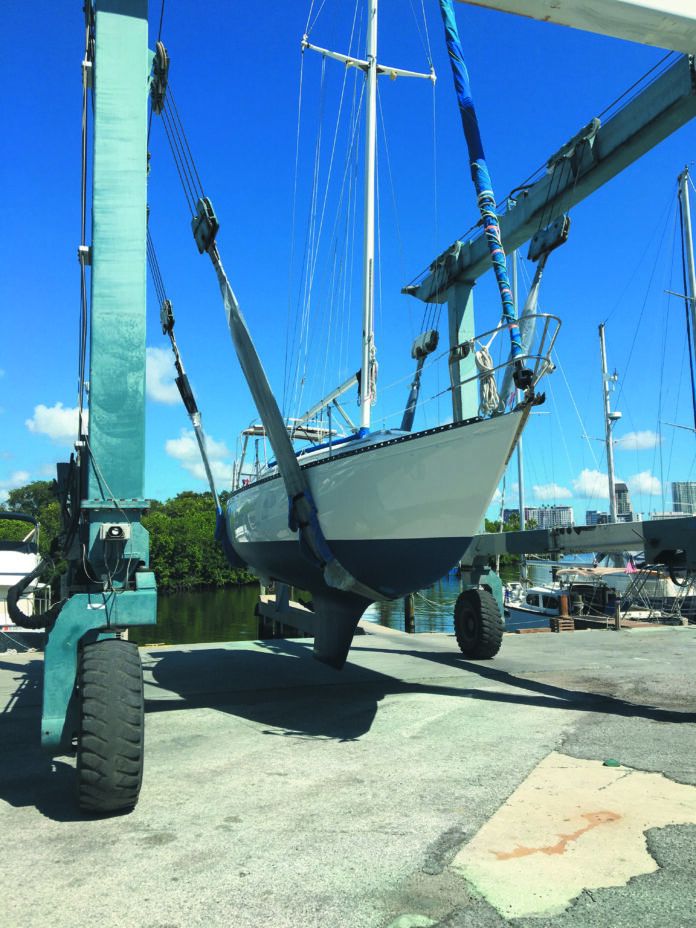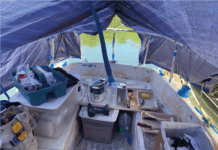Amidst the excitement of launch day—your desire to be back in the water, and the yard’s eagerness to make room for another customer (chaching)— there’s a chance something might get missed. A pre-launch checklist can help avoid spoiling the big day.
DAY BEFORE LAUNCH
Now is the time to check that the yard (or you) didn’t overlook anything.
1. Do a walk around. Check that your zincs, through hulls, prop shaft, prop, and all underwater hardware and fittings are all set.
2. Take photos clearly showing keel, strut, prop, transducers and any underwater fittings. This will be handy for future haulouts.
3. Check battery level and starter circuit. Recharge battery as needed.
4. Prepare sails, running rigging, fenders, dock lines, boat hooks, and deck gear for getting underway.
5. Lay out the parts and tools needed for final rig reassembly (if needed).
6. Make sure the big wrenches required for adjusting the packing gland are close at hand.
7. Check bilge pump operation.
8. Exercise seacocks, making sure you can open and close them. Close them all. (Forgetful types can choose to open the engine seacock now and skip Step 3, below.)
9. Check oil, gearbox oil, coolant reservoir, alternator belt.
10. Check rudder and steering system.
11. If the drive train has been serviced, check the prop-shaft coupling (see Step 7, below).
12. Check in with the lift operator regarding launch procedures.
IN LAUNCH BASIN
These checks often take place with the Travelift on stand-by with slings slack —and well clear of the propellor—or when the boat is warped to an adjacent check-out slip.
1. Check shaft packing gland (see PS February 2019, “Stuffing Box Care”). If it is dripping excessively, tighten just until it stops. Even dripless prop shaft seals should be checked.
2. Check all through hulls. This includes through-hull transducers and rudder shaft seal.
3. Open the engine intake seacock.
4. Start engine. Check for cooling water being expelled in the exhaust. Inspect the engine for fuel, exhaust, or water pump leaks.
5. Secure the boat to check engine in forward and reverse gear. Re-check stuffing box for leaks while in gear. A regular 3-4 drips every minute is usually fine. Check that the locknut for the packing compression nut is holding fast.
6. If you’ve pulled the propeller shaft or worked on the shaft coupling, observe the coupling in reverse gear under moderate load. If the shaft set screw is not properly set, the shaft can pull out in reverse (don’t ask how I know this).
7. Monitor engine temperature and operation.
8. Give the Travel-lift operator the all-clear.
Most yards have a dockside slip available so you can again go through some of the above steps and make any additional checks. Use this time to doublecheck all the underwater components and the engine operation.
Once you finally leave the dock and are on your way, take a deep breath. Soon enough, the routine will be as familiar as your favorite sweater.





































